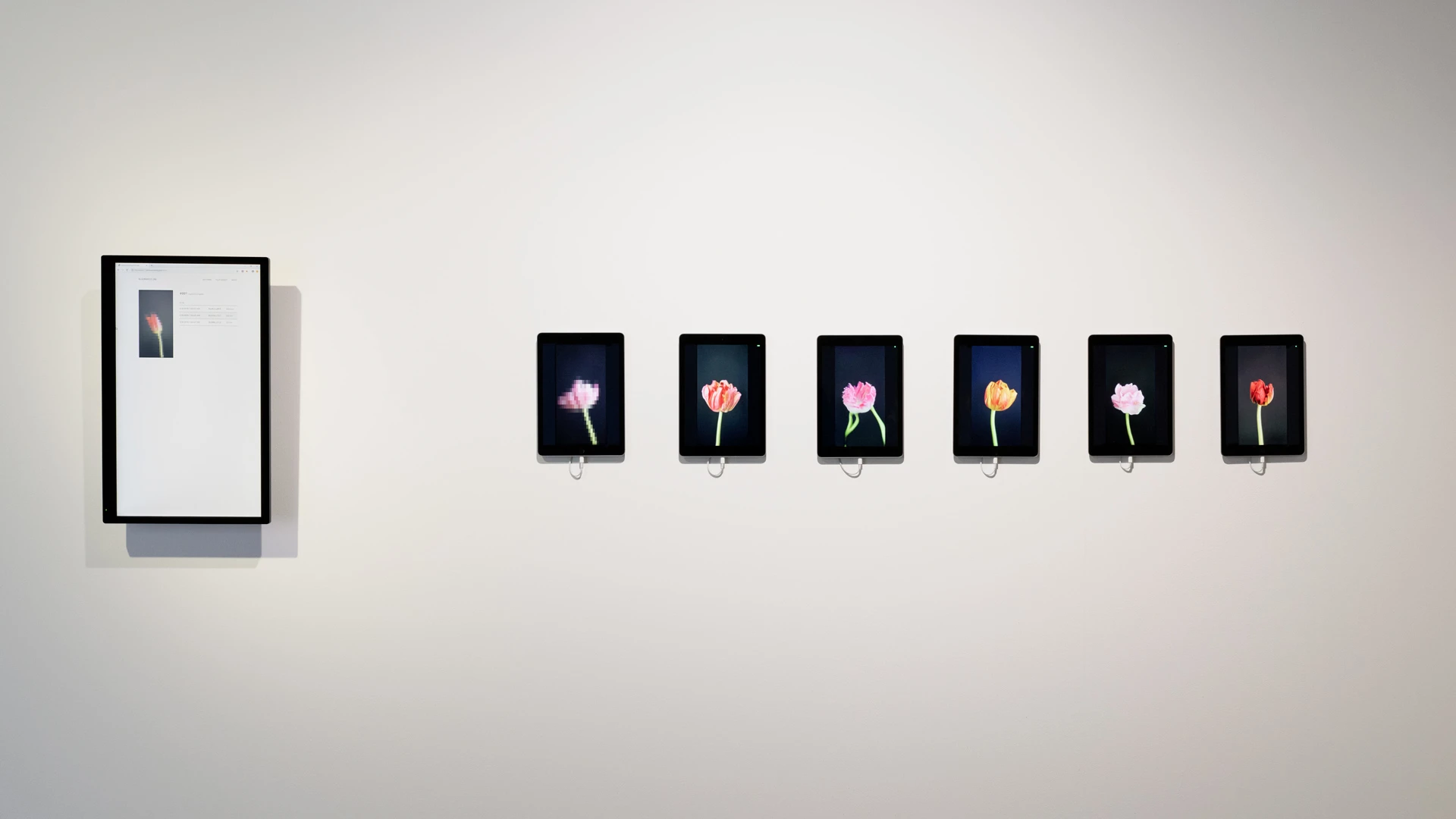Before the artist Anna Ridler started working with the blockchain, she says, “it seemed that there was almost an uncanny dullness to it—blandly sleek tech bros droning on about ‘distributed ledgers’ and ‘decentralized autonomous organizations.'”
It makes some sense, as Ridler, who frequently works with other tech, like AI and machine learning, points out: “Ethereum is essentially just a very complicated way to automate contract resolution, which is very tough material to make art out of,” she explains. “Other parts of the current conversation around technology, like AI, have all sorts of cultural history behind them that can be mined for ideas, but with blockchain there’s almost none of that.”
The fact that the blockchain is sort of, well, boring, posed a challenge: Is it even possible to make compelling art with it?

The answer to that question is on display now at Haus der elektronischen Künste, the contemporary art center in Basel, Switzerland. It’s also available online for anyone to watch and participate in online.
Called Bloemenveiling, it’s a 1oo-day online auction inspired by the fabled Tulip Mania of 17th-century Holland, where intense demand for tulips spurred informal auctions where people could bid on bulbs, with little real knowledge of what kind of bloom they’d be getting. As historian Anne Goldgar recounts, witnesses in 1637 report one tavern deal in which a pound of striped tulip bulbs was sold for a price of a “reasonably nice house” (though the buyer eventually “wriggled” out of the deal) before the bubble burst. Historians still debate the economic and social forces that spurred Tulpenmanie.

Bloemenveiling is essentially a recreation of those legendary tulip auctions. Except in this case, the “tulips” up for auction are actually short videos of tulips blooming—the product of a past piece by Ridler that trained a type of artificial intelligence called a Generative Adversarial Network to create the blooms. And the auction itself is conducted not in taverns, but on the Ethereum network.
Each day, a new auction puts a tulip video up for bidding. Anyone can bid, including humans but also bots that the artists have designed to participate and boost demand. After three days, the highest bidder receives the final, unopened tulip video. When they open the file, the blockchain’s smart contract system, powered by the Ethereum network, triggers a countdown that ensures each tulip bloom video will only last for a week. Just like a real flower, it eventually “wilts,” and can no longer be enjoyed by the winner. “We were able to use them to mirror how real tulips bulbs behave: it will show the video, or bloom, for a week (approximately the amount of time a cut tulip for last for),” explains Ridler, who collaborated with DeepMind research scientist David Pfau on the piece.
From one angle, it’s a celebration of the technical genius of the the blockchain; from another, it’s an experiment in leveraging blockchain to produce and distribute art. “So much of the blockchain world now is just people trying to make a quick buck, and the only really popular use for blockchain is financial speculation, which takes away from the appreciation of the thing itself,” Ridler says over email. “We wanted to force people to actually appreciate the thing itself, the video work, by making it temporary and therefore difficult to trade.”
At the same time, there’s an immense environmental cost to doing anything with blockchain or artificial intelligence, and the irony of a digital flower auction that depletes natural resources isn’t lost on its creators. “I’ve spent months running something that can now create perfect simulacras of nature, whilst all the time using up the natural resources in order to create it,” she continues. “This is a tension that I haven’t quite resolved.”
So far, there have been about 45 of these auctions (you can check out the full ledger online for yourself right here). While their bots have won some of the tulips, humans are now working out strategies to win against the artists’ demand-boosting bots. To even further inflate demand for their blooms, the artists have capped the number of tulip auctions at 100, which means there are 55 left to bid on yourself. If you want to get in on the action, check out the detailed how-to page here.
Recognize your brand’s excellence by applying to this year’s Brands That Matter Awards before the early-rate deadline, May 3.